Maybe you’ve been thinking, “I want to create separate spaces in my studio,” or “I need to divide my room so I can switch between work and relaxation mode.” But you might not know exactly how to go about dividing up a studio apartment.
This article covers 5 simple ways you can partition your studio apartment. Use these ideas to help separate your space.
Village House offers many rental properties starting from ¥ 20,000 across Japan. If you’re looking for a place to live, please visit our website.
Use rug mats to create visual boundaries
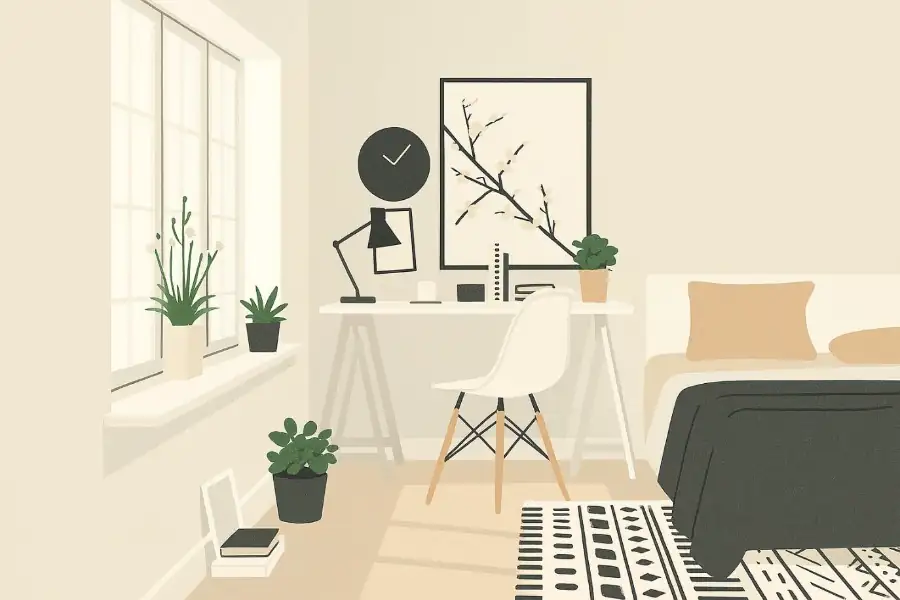
When you live in a studio, your bed, kitchen table, and couch all share the same room. Each area does its job throughout your day, but without actual walls separating them, everything can start to feel like one big, undefined space, especially if you’re just relying on furniture placement to mark boundaries.
That’s where rugs come in handy. Sure, they look nice, but they’re also surprisingly good at dividing your space.
Take this example: put a thick, fluffy rug by your bed and a smooth, flat one where you watch TV. The difference in how they feel under your feet immediately tells you which area is for winding down and which is for being active. Your body picks up on these cues without you even thinking about it.
There are bonus benefits, too. Rugs muffle noise and provide a cozy surface for bare feet, which adds to the overall comfort of your space. They’re smart design choices that do double duty – looking great while solving real layout challenges and improving how your studio feels to live in.
Set the mood for each area with lighting
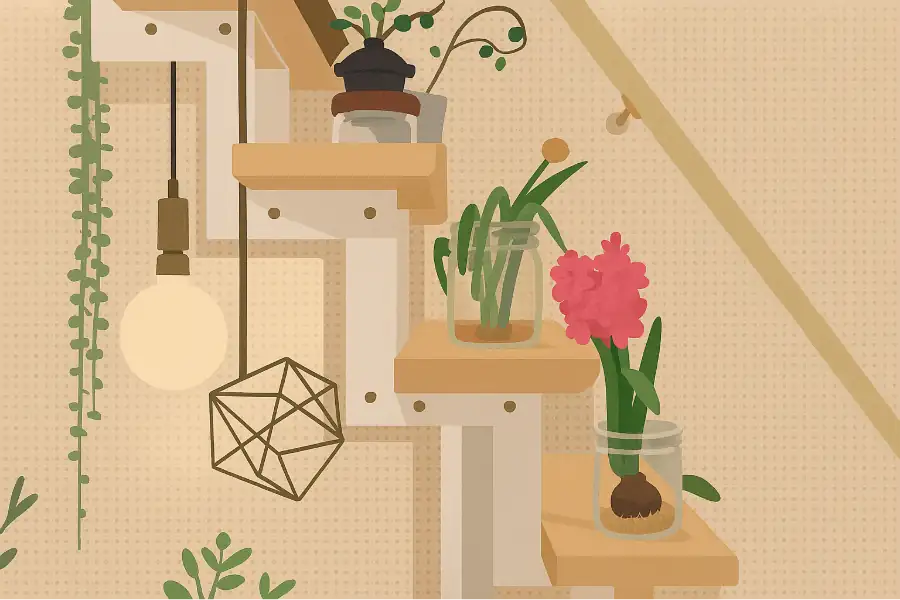
Even in an open studio, you can create depth and natural contrast by changing the color, brightness, and height of your lighting. This lets you set the right atmosphere for each area’s specific use.
Around your bed, try warm-colored indirect lighting. The soft, warm light gently illuminates the space and helps calm your mind and body at the end of the day. Place a floor lamp near the wall or bedside, and the light will bounce off the wall and spread, giving the whole room a peaceful mood.
For desks and work areas where you need to focus, white desk lamps work best. They light up your workspace clearly, boosting productivity and making it easier to switch between work mode and downtime.
If you want to break up the monotony that studios can have, try pendant lights over your dining area. Lighting the table from a lower position tightens up the space and creates a cafe-like atmosphere. Lighting controls the “feel” of your space. Instead of brightening everything equally, focus on “partial lighting” – illuminating only the areas you need. This creates depth and rhythm even in a limited space.
For more info, check out our blog: How to Choose the Perfect Lighting for Your Home
Gently divide the space with your furniture arrangement
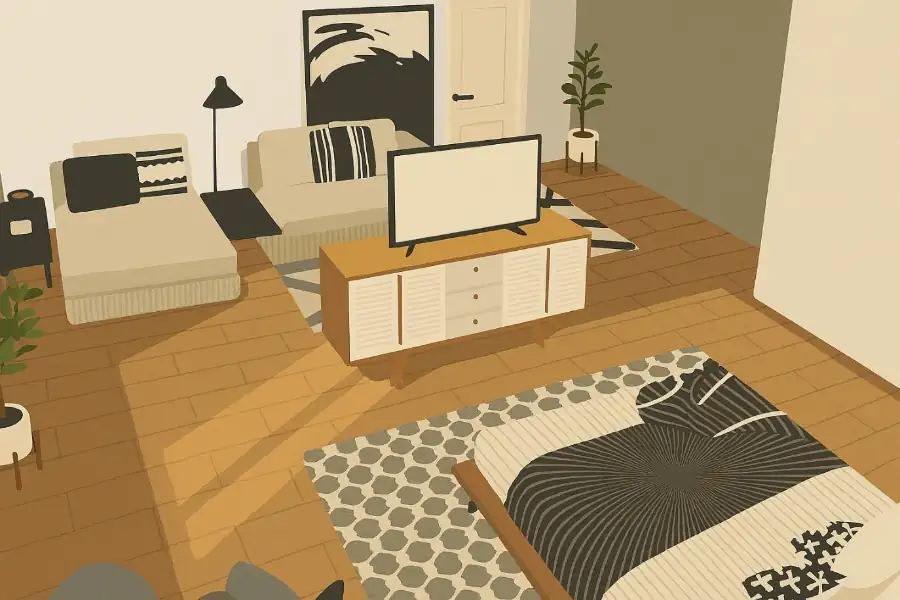
In a studio, your entire life happens in one continuous room. While convenient, this means different activity areas can blur together, making it unclear where your bedroom ends and dining space begins.
A gentle partition using furniture is recommended for dividing each living space. By changing the orientation and arrangement of furniture, you can naturally divide a space without using walls or doors.
If you position the back of the sofa facing the bed, it helps break the line of sight, subtly separating the sleeping area from the living space. In a one-room apartment, this kind of soft separation keeps things feeling open while still defining each area.
You can use open shelving or low storage pieces as room dividers that still let light and air flow through. Fill them with books, plants, or things you like looking at – they’ll do double duty as storage and decoration. Even just turning your desk or dining table facing a different direction can shift how the space feels and help you mentally switch between eating and working”.
Separate areas using different colors and textures
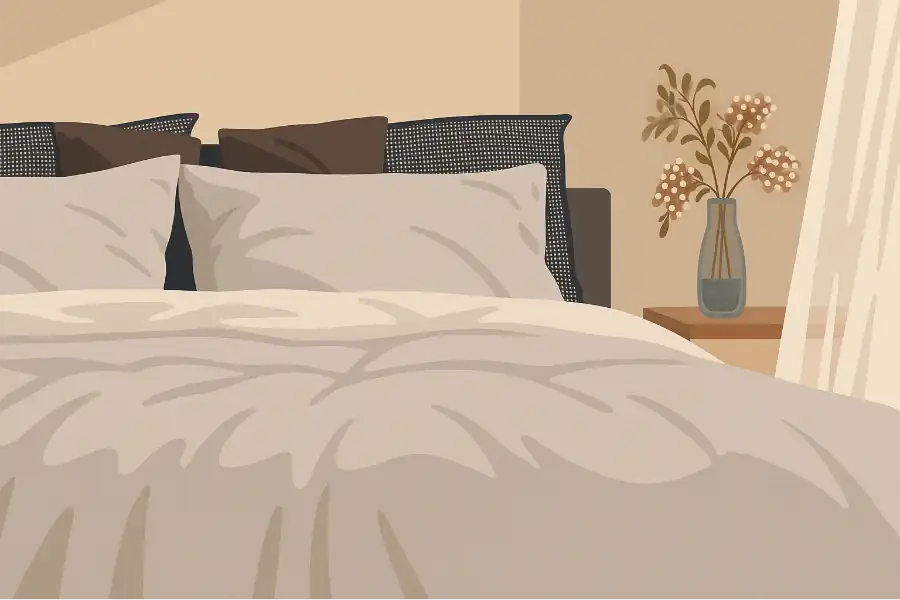
In an open space like a studio, smart color choices can visually divide areas. For example, use warm tones like beige or brown in your living space, and cooler shades like gray or navy in your bedroom. Just changing the color palette by area makes it easier to mentally switch between zones.
Playing with different textures and materials adds another layer of definition. Sink-into-me fabrics and plush rugs feel right at home in your relaxation zones, while crisp linens and smooth wood-grain surfaces belong in areas where you need to focus and be productive. These material shifts give each corner of your space its personality and purpose, no construction required.
Control your field of vision by thinking vertically
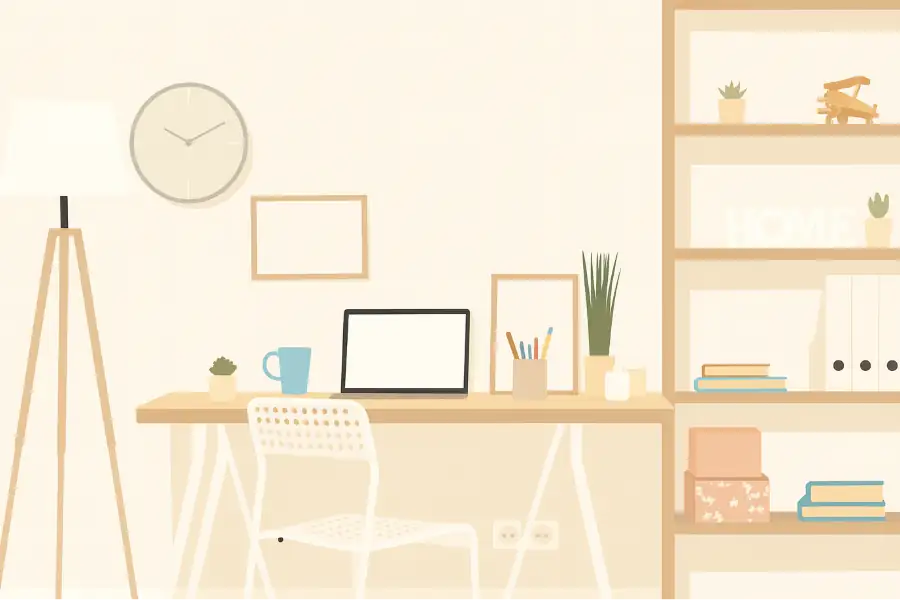
In a studio apartment where everything exists in one open space, most of your furniture and stuff naturally end up at the same height, creating a cluttered feeling that hits you right at eye level. The fix? Get people looking up instead of across.
Wall hooks are your friend here. Use them to hang hats, bags, or maybe some dried flowers or anything that pulls the gaze upward while keeping your floor space clear. When you group these items with some thought to how they look together, matching colors or styles, they stop being just storage and start being part of your room’s personality. It’s functional stuff that makes the place look better, not busier.
Also, even just placing one tall potted plant will create vertical movement in your field of vision and add rhythm to the space. Another nice point is that the natural form of the plant adds height without feeling oppressive.
A full-length standing mirror can also create a sense of vertical layers in the room. By reflecting light and surrounding elements, it adds depth and makes the room feel bigger than it actually is, making it a practical and stylish addition to a one-room apartment.
Source: Osaka University Architectural Planning Research on Emotional Spatial Environment
For more info, check out our blog: How to Make a Small Apartment Feel More Spacious
At Village House, a deposit, key money, processing fee, or renewal fee is not required (※). If you’re looking to save on initial costs, don’t hesitate to contact us for more information.
※Please note that a deposit may be required depending on the specific terms of the contract and the results of the screening process.
Related articles:

Hello, I’m Machiko Doi, a freelance writer who writes about housing and living in Japan.
I live in an 80-year-old house that I inherited from my grandparents along with my two shelter cats and daughter.
We live a relaxed life while repairing the house.
I like to cook vegetables from the garden and fresh fish caught by my father, and enjoy them with cold beer on a hot day or hot sake on a cold day.



